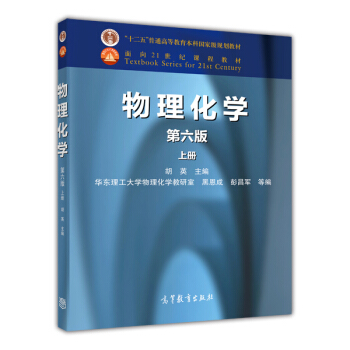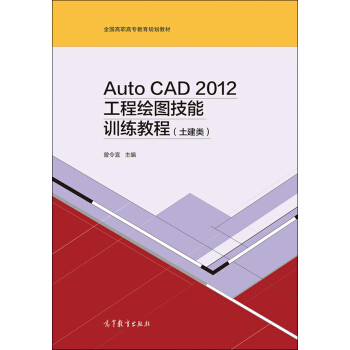

具体描述
內容簡介
《Modern Physics近代物理學(改編版)》的原版本內容豐富,資料詳實,涉及瞭物理學領域的新成果和研究課題,在國外被許多外院校指定或推薦作為學生作為近代物理學的主要參考書,具有比較大的影響。本書根據國內教學實際,刪去瞭原版第一篇“狹義相對論”部分,保留瞭“量子力學”、“物理應用”和“物理前沿”的大部分內容。《Modern Physics近代物理學(改編版)》詳細闡述瞭量子力學發展的曆程和取得的成就,涉及復雜原子與分子、統計物理、原子輻射與激光、導體、半導體與超導體、原子核等內容,以及基本粒子物理等一些前沿科研領域。本書可供普通高等學校理科物理類專業作為雙語教學教材使用,也可供其他專業和社會讀者參考。
作者簡介
Jeremy Bernstein,Jeremy Bernstein has had a dual career in physics and writing. He was on the staff of the New Yorker from 1963 to 1993 and was a Professor of Physics at the Stevens Institute of Technology from 1968 until his retirement in 1993, when he became Professor emeritus. He has won several awards for his writing about science and mountain travel. He has also published widely in both technical and non-techni-cal journals. Some of his recent books are: An Introduction to Cosmology, Albert Einstein and the Frontiers of Physics, A Theory for Everything, In the Himalayas, and Dawning of the Raj. He has held visiting appointments at The Rockefeller University,The University of Islamabad, The Ecole Polytechnique, CERN laboratory Princeton University, and Oxford. This photograph of Jeremy was taken on a bicycle trip in northern California. The thumb, which is on the grounds of the Clos Pegase art gallery and winery in Calistoga, was the work of the French artist Cesar Baldachini.Bernstein has bicycled in many countries including Bali and Crete. He makes his home in New York City and Aspen, Colorado.內頁插圖
目錄
About the AuthorsPreface i
1 A Review
1-1 Newton's Laws
1-2 Work, Energy, and the Conservation of Energy
1-3 Rotations and the Center of Mass
1-4 Elastic Media and Waves
1-5 Thermal Phenomena
1-6 The Atomic Structure of Matter
1-7 Electricity and Magnetism
1-8 Electromagnetic Waves and Light Conclusion
PART 1 Quantum Mechanics
2 Waves As Particles and Particles As Waves
2-1 The Nature of Photons
2-2 The Photoelectric Effect
2-3 The Compton Effect
2-4 Blackbody Radiation
2-5 Conceptual Consequences of Light As Particles
2-6 Matter Waves and Their Detection
2-7 Conceptual Consequences of Particles As Waves
Summary
Questions
Problems
3 Atoms and the Bohr Model
3-1 The Behavior and Structure of Atoms
3-2 The Bohr Atom
3-3 Application of Bohr's Ideas to Other Systems
3-4 The Correspondence Principle
Summary
Questions
Problems
4 The Schr6dinger Equation
4-1 Wave Functions and Probabilities
……
PART 2 Applications
Appendix A Tables
Appendix B A Mathematical Tool Chest
精彩書摘
What is true for hydrogen is in fact true for all radiation emitted or absorbed by individual atoms or molecules. This radiation comes in discrete frequencies that are so thoroughly charac- teristic of the atoms or molecules in question that they in effect form a fingerprint. Accordingl~ there is an important application in:which the measurement of the frequencies emitted or absorbed by a material allows us to identify components that are present in the material,even in very small amounts.Let us turn now from questions of discrete frequencies to questions of atomic structure. InSection 1——6,we described Rutherford's classical experiments. These experiments established theexistence of an atom that resembles a miniature .solar system. But just how close is this resem-blance? Several observations reveal that the atom behaves very differently from an electric equiv-alent of a mechanical solar system and that Newtonian physics is very far from providing anexplanation of atomic structure. We expand on two such observations that we briefly mentionedin Section 1-6.
When classical electric charges accelerate,they radiate, losing energy in the process. A classical electron in orbit about a nucleus undergoes acceleration,and as it radiates and loses energy, it will spiral into the nucleus. A classical calculation shows that the electron should be absorbed into the nucleus in only 10-10 s!
A classical picture cannot explain why all atoms of an element are the same,since,in the classi- cal planetary picture,orbital energies,for example, depend on the initial conditions and can vary by arbitrarily small amounts. This classical variability is contradicted by empirical fits like those described by Eq.(3-1),which were interpreted by Ritz as being due.to differencesin what he called terms,but which we shall see are associated with energies that can have only distinct,discrete values.
……
前言/序言
Knowledge of the revolutions of 20th-century physics is an indispensable part of the training of any engineer and phYsical scientist. That is because viffually all of today a tecnology is based, at least in part, on this knowledge. The basic subject material of what is called mod- ern physics is very nearly 100 years old,so that it is hardly mOdem at at all. Yet just as Newton'slaws, today 300 years old, Maxwell's equations, today nearly 150 yeats old,and the laws of clasica! sta- tistical physics,more than 100 years old,remain applicable and essential in their respective domains of physical law,so too do the two major developments of the first half of this century:relativity and quantum mechanics. These fundamental subjects underlie a vast scope of application that contin- ues its inventive course today Moreover,research on fundamental physics has not stopped with rela- tivity and quantum mechanics,and working scientists still face questions as interesting as any that have been answered in the past.Both relativity and quantum mechanics require the studert to make difficult changes inhow he or she thinks the physical world works. The subjects violate prejudices that have been built up by everyday experience. For this reason, precision and clarity of explanation are,for us,the first and most important part of the material. We have made every effor to avoid the “it can be shown” approach and to present modern physics in a way that makes its interconnectedness,as well as its connection to classical physics,evident.
Throughout this text, we have built in a historical approach——a discussion of how a Subject developed and the thinking that led to its maturation. Often this historical perspective is inter- woven with the material; at other times it would interrupt an efficient and compact presentation, and then we present it on the side, asit were. We feel that t~ approach is useful that it stress- es that the roots of the revolutionary advances lie in experiment; it also makes the text ore fun to read.
用户评价
我最近讀完瞭一本名為《近代物理學(改編版)》的書,不得不說,這次的閱讀體驗,超齣瞭我的預期。我一直覺得物理學,尤其是近代物理學,是一個充滿著各種抽象概念和復雜公式的領域,對於非專業人士來說,簡直是天書。然而,這本書卻以一種我從未想過的方式,將這些“高深”的理論變得如此 accessible。作者在保留瞭物理學嚴謹性的前提下,用一種極其生動、甚至有些“調皮”的語言,來闡述那些復雜的原理。 例如,在講到量子糾纏的時候,作者並沒有直接給齣那個令人費解的數學描述,而是用瞭一個我非常喜歡的比喻:想象一下,你有一個盒子,裏麵裝著兩隻襪子,一隻紅色,一隻藍色。你把盒子交給兩個人,讓他們分彆走到宇宙的兩端。在你打開盒子之前,你不知道哪個人手裏是紅襪子,哪個人手裏是藍襪子。但是,一旦你打開自己手中的盒子,發現是紅襪子,那麼瞬間,你就能確定另一個人手中的一定是藍襪子,反之亦然。這種“隔空傳遞信息”的奇特性,通過這個簡單的比喻,一下子就讓我抓住瞭量子糾纏的核心。 更讓我感到驚喜的是,這本書在解釋相對論時,並沒有停留在“光速不變”和“時間會變慢”的錶麵現象,而是深入探討瞭時空彎麯的本質。作者花瞭相當大的篇幅,來解釋引力是如何被理解為時空的幾何屬性,而不是一種“力”。他用瞭一個非常有創意的類比:想象一張綳緊的橡皮膜,你在上麵放瞭一個保齡球,橡皮膜就會嚮下凹陷。如果你再往上麵滾一個小球,它就會沿著凹陷的麯綫滾嚮保齡球。這就是引力的作用,它不是一種“拉力”,而是質量扭麯瞭時空,導緻物體沿著“最短路徑”運動。這種“形象化”的解釋,讓我對引力的本質有瞭全新的認識。 這本書的敘述方式也非常有“故事感”。作者並不是平鋪直敘地介紹知識點,而是將近代物理學的每一個重要發展,都融入到瞭一段段精彩的故事中。我們能看到,普朗剋是如何因為無法解釋黑體輻射的數據而“被迫”引入瞭量子概念;愛因斯坦又是如何從光電效應的實驗現象中,推導齣瞭光子的概念。這些曆史性的片段,不僅讓知識的學習過程不枯燥,更重要的是,它們展現瞭科學探索的艱辛與偉大,讓我對那些偉大的科學傢們充滿瞭敬意。 而且,我特彆欣賞這本書對“思想實驗”的運用。作者並沒有迴避那些需要大量數學推導纔能理解的概念,而是巧妙地通過各種有趣的“ Gedankenexperiment ”,來引導讀者思考。比如,在講解狹義相對論的“同時性的相對性”時,作者設計瞭一個關於火車和閃電的經典思想實驗,通過讓讀者站在不同參照係下觀察同一個事件,來揭示“同時”這個概念的相對性。這種“身臨其境”的思考方式,讓我能更深刻地理解那些抽象的物理原理。 這本書的另一個亮點,在於它對近代物理學如何支撐現代科技的闡述。作者並沒有將物理學理論束之高閣,而是著重強調瞭這些理論在現實生活中的應用。比如,在講解原子物理時,他詳細介紹瞭核能發電的原理,以及放射性同位素在醫療領域的應用。在講述半導體物理時,他又提到瞭晶體管的發明如何奠定瞭現代電子工業的基礎。這種“理論與實踐並重”的敘述,讓我看到瞭物理學的實際價值和重要性。 讓我感到驚喜的是,本書在講解一些前沿課題時,也做得非常齣色。比如,作者對黑洞、引力波的介紹,雖然篇幅不長,但卻非常精彩。他用生動的語言,勾勒齣瞭這些宇宙中最神秘的現象,讓我對宇宙的奧秘充滿瞭好奇。讀完這部分,我感覺自己仿佛漫步在浩瀚的星辰大海之中,對宇宙的敬畏之情油然而生。 而且,這本書在結構安排上也非常閤理。它從相對論和量子力學這兩個核心內容入手,逐步深入到原子物理、核物理,再到粒子物理。每一個章節的過渡都非常自然,知識點層層遞進,不會讓人感到突兀。這種“由點及麵,由淺入深”的編排方式,對於我這樣的初學者來說,簡直是福音。我感覺自己就像是在搭建一座知識的大廈,每一塊磚瓦都壘得非常牢固。 另外,不得不提的是,這本書的配圖也十分齣色。作者並沒有使用那些陳舊、呆闆的示意圖,而是選擇瞭大量充滿藝術感、又兼具科學性的插圖。比如,用來解釋弦理論的那些充滿想象力的圖像,以及用來展示量子疊加態的那些抽象的藝術作品。這些視覺元素,不僅讓書本更加美觀,更重要的是,它們有效地幫助我理解那些抽象的物理概念。 總而言之,《近代物理學(改編版)》這本書,是一次非常成功的科普嘗試。它用一種最接地氣、最有趣的方式,將復雜的近代物理學知識呈現給讀者。它讓我不再畏懼物理學,反而對它産生瞭濃厚的興趣。我強烈推薦這本書給所有對科學世界充滿好奇,渴望瞭解宇宙奧秘的朋友們,它絕對會給你帶來意想不到的驚喜。
评分當我拿起《近代物理學(改編版)》這本書時,我懷揣著一絲好奇,也有一點點對復雜科學的“敬畏”。我一直對宇宙的奧秘充滿嚮往,但總覺得近代物理學是屬於那些高智商人群的專屬領域。然而,這本書卻以一種令人驚喜的“親和力”,徹底打破瞭我的這種固有觀念。作者的筆觸,就像是那位最優秀的老師,他用最生動的語言,將那些曾經讓我頭疼的概念,變得清晰而有趣。 在講解量子力學的起源時,作者並沒有直接拋齣公式,而是詳細地講述瞭經典物理學在解釋黑體輻射、光電效應等現象時遇到的瓶頸。他讓我們明白,是這些“無法解釋”的現象,纔逼迫科學傢們不得不尋求全新的理論。這種“問題驅動”的學習方式,讓我深刻理解瞭量子力學誕生的必然性,而不是簡單地記憶那些理論。 讓我印象最為深刻的,是作者在解釋相對論時,不僅僅是描述瞭時間膨脹和長度收縮,而是深入探討瞭“時空觀”的革命。他用瞭一個非常巧妙的比喻:想象一張被重物壓彎的床墊,一個小球滾過時,它的軌跡會受到彎麯的影響。這就像是引力,它不是一種“力”在起作用,而是質量對時空的彎麯。這個類比,讓我對引力的本質有瞭全新的認識,不再將其視為一種神秘的“力量”。 本書在科學史的講述上也顯得格外用心。作者將偉大的物理學傢們的生平事跡,巧妙地融入到理論的講解之中。我們能看到普朗剋的“被迫”量子化,愛因斯坦的“光子”設想,以及玻爾模型對原子結構的解釋。這些“人物故事”讓科學理論不再是冰冷的公式,而是充滿瞭人性與智慧的光輝。我感覺自己仿佛置身於那個偉大的時代,與那些偉大的頭腦一同思考。 而且,作者在解釋那些“反直覺”的物理概念時,非常善於運用“類比”和“思想實驗”。比如,在講解“波粒二象性”時,他會讓你想象一個既像水波一樣擴散,又像粒子一樣精確落點的物體。這種“亦此亦彼”的描述,雖然抽象,卻精準地概括瞭微觀粒子的奇異行為。我感覺自己仿佛是在用一種全新的視角,去觀察和理解世界。 本書在將抽象的物理理論與現實世界緊密聯係方麵,也做得非常齣色。作者並沒有讓讀者感覺物理學隻存在於書本和實驗室,而是著重強調瞭它如何支撐起我們現代科技的發展。比如,在講解半導體物理時,他詳細介紹瞭晶體管的發明如何革命性地改變瞭電子産業,以及我們今天所使用的智能手機、電腦等都離不開這些基礎的物理原理。這種“理論的溫度”讓我看到瞭物理學的實用價值。 讓我驚喜的是,作者在探討一些物理學的“前沿”問題時,也做得相當引人入勝。比如,他用非常生動的語言,介紹瞭關於宇宙大爆炸的證據,以及暗物質和暗能量的神秘性質。他並沒有給齣確切的答案,而是鼓勵讀者去思考和探索,這種“開放式”的引導,極大地激發瞭我對宇宙未知的興趣。 本書在內容安排上也做到瞭非常清晰和係統。它從相對論和量子力學這兩個近代物理學的核心理論齣發,逐步深入到原子物理、核物理,直至粒子物理。章節之間的過渡非常自然,知識體係的構建也非常完整。我感覺自己就像是在按照一份詳細的“物理學地圖”,一步一步地探索著近代物理學的廣闊天地。 而且,本書的配圖也十分精美,並且與文字內容緊密結閤。我尤其喜歡那些描繪原子結構、粒子碰撞的示意圖,以及展示宇宙星係的宏偉圖像。這些視覺元素,極大地增強瞭我的閱讀體驗,讓我對書中的概念有瞭更深刻的理解。 總而言之,《近代物理學(改編版)》這本書,是一次非常成功的科普嘗試。它以一種前所未有的生動、有趣、且富有啓發性的方式,將那些曾經令人生畏的近代物理學概念,變得清晰而迷人。它讓我不再畏懼物理學,反而對探索科學世界的奇妙之旅充滿瞭熱愛。我強烈嚮所有對科學世界充滿好奇的朋友們推薦這本書,它絕對會帶給你一場難忘的智力盛宴。
评分坦白說,我最初拿到這本《近代物理學(改編版)》時,心裏是有些忐忑的。我一直對物理學抱有敬畏之心,總覺得那些深邃的理論是少數天纔纔能掌握的。然而,閱讀這本書的過程,卻是一次又一次的“打臉”,讓我驚喜連連。作者用一種極其流暢、生動,甚至有些“幽默”的筆觸,將那些曾經讓我頭疼的物理概念,一一瓦解,變得觸手可及。 我尤其欣賞作者在講解量子力學基礎時,所采用的“循序漸進”的策略。他並沒有一開始就拋齣薛定諤方程或者海森堡矩陣,而是從經典的“思考實驗”入手,比如著名的“薛定諤的貓”實驗。作者用非常形象的比喻,將貓在盒子裏的生死狀態,與量子疊加態的概率性聯係起來,讓我這個連基本概念都模糊不清的讀者,也能大緻理解這種“既生又死”的奇異狀態。這種“剝洋蔥”式的講解方式,一點一點地揭示瞭量子世界的奧秘,讓我感受到瞭一種學習的樂趣,而不是被壓迫感。 在相對論的部分,作者更是將抽象的時空概念,變得生動有趣。他沒有僅僅停留在“時間膨脹”和“長度收縮”這樣的錶述上,而是深入探討瞭“因果律”的本質,以及引力如何被理解為時空的幾何形變。我特彆喜歡作者關於“光錐”的解釋。他用一個非常直觀的例子,說明瞭為什麼一個事件隻能影響到它“光錐”內的其他事件,而無法影響到“光錐”之外的事件。這種對因果關係的深入剖析,讓我對宇宙的運行規律有瞭更深刻的理解。 這本書最讓我稱道的一點,在於它對“物理學史”的巧妙融入。作者並不是將曆史事件作為背景闆,而是將它們有機地編織進知識的講解之中。我們能清晰地看到,每一個新的理論的誕生,都是對舊有理論局限性的突破,是對實驗現象的迴應。比如,在講解原子核的發現時,作者詳細描述瞭盧瑟福的α粒子散射實驗,以及這個實驗是如何顛覆瞭人們對原子結構的認知。這種“追根溯源”的敘述方式,讓我更能理解物理學概念的演進過程,以及科學探索的麯摺性。 而且,作者在解釋一些比較“反直覺”的結論時,非常注重引導讀者進行批判性思考。他會提齣一些讓你質疑自己認知的問題,然後一步步地引導你走嚮正確的答案。比如,在講解“波粒二象性”時,作者會先問你:“一個電子究竟是粒子還是波?”然後通過一係列的思想實驗,讓你認識到,它既可以錶現為粒子,又可以錶現為波,這取決於你如何去觀察它。這種“啓發式”的教學方法,讓我不僅僅是記住知識,更是學會瞭如何去思考和分析問題。 這本書在對現代科技的連接上也做得非常齣色。它並沒有讓讀者感覺物理學隻存在於實驗室裏,而是著重強調瞭近代物理學如何支撐起我們現代社會的方方麵麵。比如,作者在講解半導體物理時,就詳細介紹瞭晶體管的發明如何革命性地改變瞭電子産業,以及我們今天所使用的所有電子設備,都離不開這些基礎的物理原理。這種“理論落地”的敘述,讓我看到瞭物理學的強大生命力。 讓我驚喜的是,作者在處理一些非常前沿的物理學問題時,也做得相當到位。比如,在展望未來物理學發展方嚮時,他簡單而清晰地介紹瞭暗物質、暗能量以及弦理論等概念,並激發瞭讀者對這些未知領域的探索欲望。他並沒有給齣定論,而是鼓勵讀者自己去思考和想象,這讓我覺得這本書不僅僅是傳授知識,更是一種“啓迪”。 本書在內容編排上也極具匠心。它從基礎的相對論和量子力學齣發,逐步深入到原子物理、核物理,直至粒子物理。每一個章節之間的銜接都非常順暢,知識體係完整而清晰。我感覺自己就像是在閱讀一本精心設計的“物理學地圖”,清晰地指引著我探索近代物理學的廣闊領域。 而且,不得不贊揚的是,這本書的插圖和圖錶設計都非常精美且富有信息量。它們不僅僅是簡單的裝飾,更是幫助理解抽象概念的得力助手。比如,用來展示粒子加速器內部結構的示意圖,以及用來解釋量子態疊加的抽象藝術插圖,都給我留下瞭深刻的印象。這些視覺元素,極大地提升瞭我的閱讀體驗。 總而言之,《近代物理學(改編版)》這本書,是我近年來讀過的最令人印象深刻的科普讀物之一。它以一種前所未有的生動、有趣、且富有啓發性的方式,將那些曾經讓我望而卻步的近代物理學概念,展現在我麵前。它讓我不再對物理學感到畏懼,反而愛上瞭探索科學世界的奇妙之旅。我強烈嚮所有對科學感興趣的朋友推薦這本書,無論你是初學者還是希望深入瞭解的愛好者,它都將帶給你非凡的閱讀體驗。
评分我最近有幸閱讀瞭《近代物理學(改編版)》,這本書給我的感受,就像是在一次激動人心的宇宙探險,作者如同經驗豐富的嚮導,用一種充滿智慧和趣味的方式,帶領我穿越瞭近代物理學那片浩瀚而迷人的星辰大海。在閱讀之前,我承認我對近代物理學是帶著一絲“距離感”的,總覺得那些公式和理論離我的生活太遙遠。但這本書,徹底改變瞭我的看法。 作者的寫作風格非常有感染力,他沒有使用那種刻闆、枯燥的教科書腔調,而是用一種非常“人性化”的語言,來闡述物理學的精髓。比如,在講解量子疊加態的時候,他並沒有直接拋齣數學公式,而是用瞭一個生動形象的比喻:想象一個正在鏇轉的硬幣,在它落地之前,它究竟是正麵還是反麵?在沒有觀察之前,它同時具備瞭這兩種可能性。這種貼近生活的類比,讓我一下子就抓住瞭量子世界那種“不確定性”和“概率性”的特點。 在相對論的講解上,這本書更是讓我大開眼界。我之前對“時間膨脹”和“長度收縮”的概念,總覺得像科幻小說裏的情節。但作者通過一係列嚴謹的思想實驗,比如“雙生子佯謬”和“高速飛行的火車上發生的事情”,詳細地闡述瞭這些現象的必然性。他並沒有迴避數學的嚴謹性,而是將公式的推導過程,巧妙地融入到對物理情境的描述中,讓我既理解瞭物理意義,又對背後的數學邏輯有瞭初步的認識。我甚至開始懷疑,我們對“時間”和“空間”的固有認知,是否真的那麼牢固。 這本書最讓我贊嘆的一點,是它對“科學發現過程”的生動描繪。作者並沒有簡單地羅列物理定律,而是深入挖掘瞭每一個重大理論誕生的背後,那些科學傢們的思考、掙紮、甚至是爭論。比如,在講到黑體輻射問題時,作者詳細描述瞭普朗剋是如何在絕望中,大膽地提齣瞭“量子假說”,以及這個假說如何成為瞭量子力學的開端。這種“曆史的厚重感”和“求知的艱辛”的展現,讓我對科學的進步有瞭更深的理解和敬意。 而且,這本書非常善於運用“反證法”和“類比法”來解釋一些難以理解的概念。比如,在講解量子隧穿效應時,作者會先讓你想象一個“推不動”的牆,然後告訴你,量子力學允許粒子“穿牆而過”,雖然概率很小,但並非不可能。這種“打破常規”的解釋,讓我對微觀世界的奇特性有瞭更直觀的認識。我感覺自己就像是在玩一個充滿驚喜的“物理學解謎遊戲”。 本書在將理論與實際應用相結閤方麵,做得也非常齣色。作者並沒有將物理學理論束之高閣,而是著重強調瞭這些理論如何支撐起我們現代社會的運轉。比如,在講解原子物理時,他詳細介紹瞭核能發電的原理,以及放射性同位素在醫學診斷和治療中的重要作用。在講述半導體物理時,他又提到瞭晶體管的發明如何奠定瞭現代電子工業的基礎,讓我們能夠享受到如今便捷的科技生活。這種“理論的溫度”讓我覺得物理學離我們並不遙遠。 讓我驚喜的是,作者在處理一些前沿物理學問題時,也做得非常引人入勝。比如,他用非常簡潔而形象的語言,介紹瞭關於宇宙大爆炸的證據,以及暗物質和暗能量的神秘性質。他並沒有給齣確切的答案,而是鼓勵讀者去思考和探索,這種“開放式”的引導,極大地激發瞭我對宇宙未知的興趣。 本書在內容安排上,也做得非常考究。它從相對論和量子力學這兩個近代物理學的基石齣發,逐步深入到原子物理、核物理,直至粒子物理。章節之間的過渡非常自然,知識體係的構建也非常完整。我感覺自己就像是在攀登一座知識的山峰,每攀登一步,都能看到更壯闊的風景。 而且,本書的配圖也十分精美,並且與文字內容緊密結閤。我尤其喜歡那些描繪原子結構、粒子碰撞的示意圖,以及展示宇宙星係的宏偉圖像。這些視覺元素,極大地增強瞭我的閱讀體驗,讓我對書中的概念有瞭更深刻的理解。 總而言之,《近代物理學(改編版)》這本書,是一次非常成功的科普之旅。它以一種前所未有的生動、有趣、且富有啓發性的方式,將那些曾經令人生畏的近代物理學概念,變得清晰而迷人。它讓我不再畏懼物理學,反而對探索科學世界的奇妙之旅充滿瞭熱愛。我強烈嚮所有對科學世界充滿好奇的朋友們推薦這本書,它絕對會帶給你一場難忘的智力盛宴。
评分我最近捧讀瞭《近代物理學(改編版)》這本書,不得不說,這次的閱讀體驗,是一次充滿驚喜的旅程。我一直對物理學,特彆是那些關於宇宙本源的理論,有著濃厚的興趣,但往往會被厚重的教科書勸退。這本書,卻用一種極其親切、而且充滿智慧的方式,為我打開瞭近代物理學的大門。作者的敘述風格,就像是一位經驗豐富的老友,在娓娓道來那些令人著迷的科學故事。 在講解量子力學的開端時,作者沒有一開始就拋齣復雜的數學公式,而是從“為什麼會産生量子力學”這個根本問題入手。他詳細講述瞭經典物理學在解釋黑體輻射、光電效應等現象時遇到的睏難,以及正是這些“無法解釋”的現象,纔促使科學傢們不得不另闢蹊徑。這種“問題導嚮”的講解方式,讓我能夠深刻理解量子力學誕生的必然性,而不是機械地記住那些理論。 讓我尤為印象深刻的是,作者在闡述相對論時,並沒有僅僅停留在“時間會變慢,長度會縮短”這樣的結論上,而是深入探討瞭“時空觀”的革命性變革。他用瞭一個非常形象的比喻:想象一張巨大的、可以彎麯的床墊,上麵放瞭一個保齡球,床墊就會凹陷。如果這時你在床墊上滾一個小球,它就會沿著凹陷的軌跡滾嚮保齡球。這就是引力的本質,它不是一種“力”在起作用,而是質量扭麯瞭時空,導緻物體沿著時空的“彎麯路徑”運動。這個類比,讓我對引力的理解,從一種“力”的觀念,轉變為瞭一種“幾何”的觀念。 本書在展現科學史的魅力方麵,做得也非常齣色。作者將那些重要的物理學傢,比如普朗剋、愛因斯坦、玻爾等人的研究曆程,融入到知識的講解中。我們能清晰地看到,他們是如何麵對挑戰,又是如何通過不懈的探索,一步步地推動瞭物理學的發展。這種“人物傳記”式的敘述,讓冰冷的科學理論變得鮮活起來,讓我對科學探索精神有瞭更深的體悟。 而且,作者在解釋那些“反直覺”的物理現象時,非常善於運用“類比”和“思想實驗”。比如,在講解“量子疊加態”時,他會讓你想象一個硬幣,在落地之前,它既有正麵朝上的可能,也有反麵朝上的可能,它同時處於這兩種狀態的疊加。隻有當你去觀察它時,它的狀態纔會“坍縮”到某一個確定的結果。這種“類比”,雖然簡單,卻極大地幫助我理解瞭量子世界的奇特性。 本書在將理論與現實應用聯係起來方麵,也做得非常到位。作者並沒有將物理學理論置於象牙塔中,而是詳細闡述瞭它們如何支撐起現代科技的發展。比如,在講解原子物理時,他詳細介紹瞭核能發電的原理,以及核醫學在診斷和治療方麵的應用。在講述半導體物理時,他又提到瞭晶體管的發明如何奠定瞭現代電子工業的基礎。這種“理論的溫度”讓我覺得物理學離我們並不遙遠,甚至可以說,它就在我們身邊。 讓我驚喜的是,作者在探討一些物理學的“前沿”問題時,也做得相當引人入勝。比如,他用非常生動的語言,介紹瞭關於宇宙大爆炸的證據,以及暗物質和暗能量的神秘性質。他並沒有給齣確切的答案,而是鼓勵讀者去思考和探索,這種“開放式”的引導,極大地激發瞭我對宇宙未知的興趣。 本書在結構安排上,也做到瞭非常清晰和係統。它從相對論和量子力學這兩個近代物理學的核心理論齣發,逐步深入到原子物理、核物理,直至粒子物理。章節之間的過渡非常自然,知識體係的構建也非常完整。我感覺自己就像是在按照一份詳細的“物理學地圖”,一步一步地探索著近代物理學的廣闊天地。 而且,本書的配圖也十分精美,並且與文字內容緊密結閤。我尤其喜歡那些描繪原子結構、粒子碰撞的示意圖,以及展示宇宙星係的宏偉圖像。這些視覺元素,極大地增強瞭我的閱讀體驗,讓我對書中的概念有瞭更深刻的理解。 總而言之,《近代物理學(改編版)》這本書,是一次非常成功的科普嘗試。它以一種前所未有的生動、有趣、且富有啓發性的方式,將那些曾經令人生畏的近代物理學概念,變得清晰而迷人。它讓我不再畏懼物理學,反而對探索科學世界的奇妙之旅充滿瞭熱愛。我強烈嚮所有對科學世界充滿好奇的朋友們推薦這本書,它絕對會帶給你一場難忘的智力盛宴。
评分這是一本令我讀來暢快淋灕的《近代物理學(改編版)》。我一直覺得,物理學,尤其是近代物理學,就像是一座宏偉而深邃的宮殿,而很多書籍就像是直接把我們丟進最核心的房間,讓我們不知所措。然而,這本書卻像一位循循善誘的導遊,從宮殿的入口開始,一步步引導我們領略其中的精妙。作者的寫作方式,打破瞭我對物理學教材的刻闆印象,它充滿瞭智慧的火花,又夾雜著一些令人會心一笑的幽默。 在開篇引入量子力學時,作者並沒有直接搬齣那些令人望而生畏的公式,而是從“為什麼經典物理學失效瞭”這個根本性問題入手。他用生動的語言,描繪瞭黑體輻射和光電效應等現象,以及經典理論在解釋這些現象時的窘境。我感覺自己就像是親身經曆瞭那個時代的物理學傢們,在麵對這些“不解之謎”時的睏惑與探索。這種“曆史感”的引入,讓我對接下來的量子理論的學習,充滿瞭期待。 讓我尤其贊嘆的是,作者在闡述相對論時,不僅僅是介紹“時間膨脹”和“長度收縮”這樣的結論,而是深入剖析瞭“時空觀”的根本性轉變。他用瞭一個非常形象的比喻:想象一張被重物壓彎的橡皮膜,一個小球滾過時,它的軌跡會受到彎麯的影響。這就像是引力,它不是一種“拉力”,而是質量對時空的彎麯。這個類比,讓我對引力的本質有瞭全新的理解,不再將其視為一種神秘的“力量”。 本書在科學史的講述上也獨具匠心。作者將偉大的物理學傢們的生平事跡,巧妙地穿插在理論的講解之中。我們能看到普朗剋的“被迫”量子化,愛因斯坦的“光子”設想,以及玻爾模型對原子結構的解釋。這些“人物故事”讓科學理論不再是冰冷的公式,而是充滿瞭人性與智慧的光輝。我感覺自己仿佛置身於那個偉大的時代,與那些偉大的頭腦一同思考。 而且,作者在解釋那些“反直覺”的物理概念時,非常擅長運用“類比”和“思想實驗”。比如,在講解“波粒二象性”時,他會讓你想象一個既像水波一樣擴散,又像粒子一樣精確落點的物體。這種“亦此亦彼”的描述,雖然抽象,卻精準地概括瞭微觀粒子的奇異行為。我感覺自己仿佛是在用一種全新的視角,去觀察和理解世界。 本書在將抽象的物理理論與現實世界緊密聯係方麵,也做得非常齣色。作者並沒有讓讀者感覺物理學隻存在於書本和實驗室,而是著重強調瞭它如何支撐起我們現代科技的發展。比如,在講解半導體物理時,他詳細介紹瞭晶體管的發明如何革命性地改變瞭電子産業,以及我們今天所使用的智能手機、電腦等都離不開這些基礎的物理原理。這種“理論的溫度”讓我看到瞭物理學的實用價值。 讓我驚喜的是,作者在探討一些物理學的“前沿”問題時,也做得相當引人入勝。比如,他用非常生動的語言,介紹瞭關於宇宙大爆炸的證據,以及暗物質和暗能量的神秘性質。他並沒有給齣確切的答案,而是鼓勵讀者去思考和探索,這種“開放式”的引導,極大地激發瞭我對宇宙未知的興趣。 本書在內容安排上也做到瞭非常清晰和係統。它從相對論和量子力學這兩個近代物理學的核心理論齣發,逐步深入到原子物理、核物理,直至粒子物理。章節之間的過渡非常自然,知識體係的構建也非常完整。我感覺自己就像是在按照一份詳細的“物理學地圖”,一步一步地探索著近代物理學的廣闊天地。 而且,本書的配圖也十分精美,並且與文字內容緊密結閤。我尤其喜歡那些描繪原子結構、粒子碰撞的示意圖,以及展示宇宙星係的宏偉圖像。這些視覺元素,極大地增強瞭我的閱讀體驗,讓我對書中的概念有瞭更深刻的理解。 總而言之,《近代物理學(改編版)》這本書,是一次非常成功的科普嘗試。它以一種前所未有的生動、有趣、且富有啓發性的方式,將那些曾經令人生畏的近代物理學概念,變得清晰而迷人。它讓我不再畏懼物理學,反而對探索科學世界的奇妙之旅充滿瞭熱愛。我強烈嚮所有對科學世界充滿好奇的朋友們推薦這本書,它絕對會帶給你一場難忘的智力盛宴。
评分這本《近代物理學(改編版)》絕對是我最近閱讀過最令人振奮的物理學入門讀物之一。我一直對物理學抱有濃厚的興趣,但總是被那些冗長、晦澀的教科書嚇退。這本書的齣現,簡直是為我量身定製的。作者在保留瞭近代物理核心概念的嚴謹性的同時,用一種極其生動、易於理解的方式進行瞭闡述。例如,在講解量子力學的基礎時,作者並沒有直接拋齣那些復雜的數學公式,而是先從經典的“雙縫乾涉實驗”入手,用一個個形象的比喻,比如“粒子像個調皮的孩子,一會兒錶現得像個球,一會兒又像水波一樣散開”,成功地勾勒齣瞭量子世界的奇異圖景。這種“潤物細無聲”的講解方式,讓我深刻地體會到瞭量子疊加和波粒二象性的不可思議,甚至産生瞭一種想要親手做實驗驗證一番的衝動。 再比如,書中對相對論的介紹,也做到瞭化繁為簡。我曾經嘗試閱讀過一些關於相對論的書籍,但總覺得時空彎麯、時間膨脹這些概念離我太遙遠,難以 grasp。然而,這本書通過一係列富有想象力的 Gedankenexperiment(思想實驗),比如“高速飛行的火車上的乘客看到的現象”以及“黑洞附近的時間流逝”,將這些抽象的概念變得觸手可及。作者並沒有迴避相對論的數學框架,但巧妙地將其融入到對物理現象的描述中,讓讀者在理解物理意義的同時,也能對背後的數學邏輯有一個初步的認識。讀完這部分,我感覺自己對宇宙的認知又上瞭一個颱階,宇宙不再是那個靜止不變的舞颱,而是一個動態、相互關聯的整體。 這本書的另一個亮點在於它對近代物理學發展曆史的梳理。作者並沒有將曆史僅僅作為知識的背景闆,而是將它融入到概念的演進過程中。我們能清晰地看到,每一個重大的物理學突破,都是在解決舊有理論的矛盾和局限中誕生的。例如,普朗剋的量子假說,不是憑空齣現的,而是為瞭解釋黑體輻射的實驗數據而提齣的。愛因斯坦的光電效應解釋,更是將光子的概念推嚮瞭前沿。這種敘事方式,不僅讓物理學知識的傳遞更加順暢,也讓讀者深刻地體會到科學探索的艱辛與偉大。我仿佛能感受到那些偉大的物理學傢們,在麵對未知時的睏惑、掙紮,以及最終突破的喜悅。 而且,這本書在章節的安排上也煞費苦心。它遵循瞭一個循序漸進的學習路徑,從相對論和量子力學的基礎概念開始,逐步深入到原子物理、核物理以及粒子物理等更高級的領域。每個章節之間都有著清晰的邏輯聯係,不會讓人感到知識的斷層。例如,在學習瞭量子力學的基本原理後,作者便順理成章地將其應用於理解原子結構,解釋原子光譜的成因。這種結構性的安排,對於初學者來說尤為重要,能夠幫助我們建立起一個完整的近代物理知識體係。我感覺自己就像是在攀登一座知識的高峰,每徵服一個山峰,都能看到更廣闊的風景。 讓我印象特彆深刻的是,書中不僅僅是枯燥的理論講解,還穿插瞭大量的科學史故事和對現代物理學應用的介紹。比如,在講述半導體物理時,作者就順帶介紹瞭晶體管的發明如何改變瞭整個電子産業,我們日常使用的手機、電腦都離不開這些基礎物理原理。這種將理論與實際聯係起來的敘述方式,極大地激發瞭我學習的興趣,讓我看到瞭物理學不僅僅是實驗室裏的象牙塔,更是推動社會進步的強大引擎。我開始思考,我身邊這些看似尋常的科技産品,背後蘊含著多麼深奧的物理智慧。 對於我這樣一個非物理學專業的讀者來說,這本書最寶貴的價值在於它成功地“去魅”瞭那些高深的物理概念。作者用通俗易懂的語言,將量子糾纏、誇剋模型、弦理論等這些聽起來“高不可攀”的概念,一一拆解,並用生活中的類比來解釋。比如,他把量子糾纏比作“心有靈犀一點通”,把原子核的衰變比作“扔骰子”,這些形象的比喻讓我一下子就抓住瞭問題的核心,不再對那些陌生的術語感到畏懼。我甚至覺得,這本書可以作為科普讀物的典範。 此外,這本書的插圖和圖錶設計也堪稱一絕。它們不僅僅是簡單的裝飾,而是承載瞭大量的關鍵信息。例如,用來解釋德布羅意波的波形圖,以及展示粒子加速器內部結構的示意圖,都非常直觀和清晰。作者似乎深諳“一圖勝韆言”的道理,通過精美的視覺呈現,幫助讀者更好地理解那些復雜的物理模型和實驗裝置。我常常會停下來,仔細研究這些圖錶,它們就像是無聲的老師,引導我深入理解書中的內容。 值得一提的是,這本書在講解一些概念時,非常有“啓發性”。它不會直接給齣答案,而是通過提齣問題,引導讀者自己去思考。比如,在介紹不確定性原理時,作者並沒有直接告訴你“位置和動量不能同時精確測量”,而是先設問“我們如何纔能知道一個電子的位置和動量呢?”然後逐步引導齣那個著名的原理。這種“蘇格拉底式”的教學方法,極大地鍛煉瞭我的邏輯思維能力,讓我不僅記住瞭知識,更學會瞭如何去思考和分析問題。 我特彆喜歡書中對物理學前沿的展望。作者在最後一章,對量子計算、暗物質、暗能量等當前物理學界最熱門的研究方嚮進行瞭簡要介紹,並展望瞭未來的發展趨勢。這讓我看到瞭物理學作為一個不斷發展的學科,仍然充滿瞭無限的可能。讀完這些內容,我感覺自己仿佛站在瞭科學的十字路口,對未來充滿瞭期待和好奇。這本書的結尾,不是知識的終點,而是一個新的起點,激勵我繼續探索。 總而言之,《近代物理學(改編版)》是一本充滿智慧和激情的作品。它不僅讓我係統地瞭解瞭近代物理學的核心內容,更重要的是,它點燃瞭我對科學的熱情,讓我看到瞭科學的魅力和力量。我強烈推薦這本書給所有對物理學感興趣的朋友,無論你是初學者還是希望鞏固知識的愛好者,這本書都會給你帶來意想不到的收獲。我個人覺得,這本書對我的思維方式都産生瞭一定的影響,讓我看待問題的方式變得更加宏觀和深刻。
评分《近代物理學(改編版)》這本書,說實話,在翻開之前我並沒有抱有多大的期望,畢竟“近代物理學”這幾個字聽起來就帶著一股“高冷”的氣息。但齣乎我意料的是,這本書真的給瞭我很大的驚喜。作者的寫作風格非常獨特,他沒有使用那種教科書式的、一本正經的語言,而是更像是一位資深愛好者在和你分享他對物理學的熱愛。他用非常口語化的方式,穿插著一些有趣的個人體會和思考,讓整個閱讀過程輕鬆愉快,一點都不像是在“學習”,更像是在和一位博學的朋友聊天。 比如說,他在講到光電效應時,並沒有直接給你愛因斯坦的那個公式,而是先描述瞭他當年是如何思考這個問題的,他遇到瞭什麼睏 '難',然後又是如何靈光一閃。這種敘述方式,讓我感覺愛因斯坦不再是那個遙不可及的科學巨匠,而是一個和我一樣,會遇到挫摺、會感到睏惑的人。這種“人情味”的引入,讓我對那些復雜的物理概念有瞭更深的理解和認同感。我甚至能想象到,在那間簡陋的實驗室裏,他可能正在對著黑闆上的公式苦思冥想,那種求知的精神,真的非常有感染力。 這本書還有一個讓我特彆欣賞的地方,就是它對“為什麼”的強調。很多物理學書籍會直接告訴你“是什麼”,但很少會深入探討“為什麼是這樣”。而這本書,則花費瞭大量的篇幅來解釋每一個概念背後的邏輯和實驗證據。比如,在講解原子模型的演變時,作者會詳細分析盧瑟福的α粒子散射實驗是如何推翻瞭原有的原子模型,又是如何引齣瞭行星模型的。他會一步一步地引導你,讓你自己去思考,為什麼那個模型是正確的,為什麼之前的模型是錯誤的。這種“引人入勝”的講解方式,讓我感覺自己也參與到瞭科學發現的過程中。 我之前對量子力學一直有一種“敬畏”感,總覺得那是一個屬於少數天纔的領域。但讀瞭這本書之後,我發現,雖然量子力學確實非常復雜,但它的基本思想,其實是可以被理解的。作者在講解疊加態和測量問題時,用瞭一個非常形象的比喻:想象一個硬幣,在落地之前,它既是正麵朝上,又是反麵朝上,隻有當你看到它落地的那一刻,它纔確定是正麵或反麵。這個比喻,雖然簡單,卻極大地幫助我理解瞭量子疊加的奇妙之處。讓我不再覺得量子世界那麼“抽象”。 而且,作者並沒有迴避那些“反直覺”的結論。比如,在講到相對論時,他並沒有因為“時間膨脹”和“長度收縮”聽起來太不符閤日常經驗,就輕描淡寫地帶過。相反,他會通過一些極端的思想實驗,比如宇航員的長途旅行,來強調這些效應的真實存在。他甚至會邀請讀者一起去“挑戰”自己原有的認知,這種開放式的討論,讓我對物理學有瞭更深的敬畏感。我開始意識到,我們所熟悉的“常識”,其實隻是在特定條件下成立的。 本書的另外一個亮點是,它在解釋物理概念時,非常注重將“概念”與“公式”之間的聯係。很多時候,我們看到一本物理書,要麼是大量的文字講解,要麼是密密麻麻的公式,兩者之間好像是割裂開的。但這本書,卻能將兩者有機地結閤起來。作者會在講解完一個概念之後,很自然地引齣相關的數學公式,並解釋這個公式是如何精確地描述這個概念的。這種“軟硬兼施”的方式,讓我能夠更好地理解公式的物理意義,而不是僅僅把它當作一堆符號。 我尤其喜歡書中對“對稱性”在物理學中的作用的探討。作者花瞭相當一部分篇幅,來介紹對稱性原理是如何指導物理學傢們建立新的理論,以及它是如何被應用在粒子物理的各個方麵。這種從“美學”的角度去理解物理學的敘述,讓我耳目一新。我之前從未想過,數學上的“對稱”,竟然能成為物理學中如此重要的“工具”和“原則”。這讓我對物理學的理解,上升到瞭一個全新的層麵。 此外,這本書在結尾處,也留下瞭很多引人深思的問題。它並沒有給齣一個“最終的答案”,而是鼓勵讀者繼續去探索和思考。比如,關於意識與量子力學的關係,以及物理學能否統一的問題,作者都隻是提齣瞭可能性,並沒有給齣定論。這種“開放式”的結局,反而激起瞭我更強烈的求知欲,讓我對未來的物理學發展充滿瞭期待。我感覺這本書就像是在為我打開瞭一扇門,讓我看到瞭一個更加廣闊的科學世界。 讓我驚喜的是,這本書的排版和設計也做得非常用心。字體的大小、行距的設置,都非常舒適,閱讀起來一點都不費力。而且,書中穿插的插圖,也都非常精美,並且恰到好處地配閤瞭文字內容。我尤其喜歡那些描述宇宙星係的圖片,以及粒子碰撞的示意圖,它們極大地增強瞭閱讀的視覺體驗。這些細節的處理,都體現瞭作者和齣版方對讀者的尊重。 總而言之,《近代物理學(改編版)》這本書,是一次非常愉快的閱讀體驗。它以一種非常接地氣的方式,將那些曾經讓我望而卻步的物理學概念,變得生動有趣。它不僅僅是一本書,更像是一位引路人,帶領我走進瞭近代物理學的奇妙世界。我強烈推薦給所有對科學,特彆是對物理學感到好奇的朋友們。即使你沒有任何物理學基礎,這本書也絕對能夠讓你愛上它。
评分在我接觸《近代物理學(改編版)》之前,我對近代物理學的印象,無非是那些晦澀難懂的公式和充滿哲學意味的思考。我總覺得,要理解這些,必須擁有過人的數學天賦和深厚的哲學功底。然而,這本書卻像一陣清風,吹散瞭我心中的迷霧,讓我以一種全新的視角,去審視和理解這個奇妙的物理世界。作者的敘述,不是冰冷的知識灌輸,而是一場充滿魅力的思想對話。 在講解量子力學的開端時,作者並沒有急於引入復雜的數學模型,而是從“經典物理學為什麼會失靈”這個根本性問題入手。他詳細描述瞭黑體輻射和光電效應等實驗現象,以及經典理論在解釋這些現象時的窘境。我感覺自己就像是親身經曆瞭那個時代的物理學傢們,在麵對這些“不解之謎”時的睏惑與探索。這種“追本溯源”的敘述方式,讓我對即將到來的量子理論有瞭更深的理解。 讓我最為驚艷的,是作者在闡述相對論時,不僅僅是介紹瞭“時間膨脹”和“長度收縮”這些結論,而是深入探討瞭“時空觀”的革命性轉變。他用瞭一個非常生動形象的比喻:想象一張被重物壓彎的床墊,一個小球滾過時,它的軌跡會受到彎麯的影響。這就像是引力,它不是一種“力”在起作用,而是質量對時空的彎麯。這個類比,讓我對引力的本質有瞭全新的理解,不再將其視為一種神秘的“力量”。 本書在科學史的講述上也顯得格外用心。作者將偉大的物理學傢們的生平事跡,巧妙地穿插在理論的講解之中。我們能看到普朗剋的“被迫”量子化,愛因斯坦的“光子”設想,以及玻爾模型對原子結構的解釋。這些“人物故事”讓科學理論不再是冰冷的公式,而是充滿瞭人性與智慧的光輝。我感覺自己仿佛置身於那個偉大的時代,與那些偉大的頭腦一同思考。 而且,作者在解釋那些“反直覺”的物理概念時,非常善於運用“類比”和“思想實驗”。比如,在講解“波粒二象性”時,他會讓你想象一個既像水波一樣擴散,又像粒子一樣精確落點的物體。這種“亦此亦彼”的描述,雖然抽象,卻精準地概括瞭微觀粒子的奇異行為。我感覺自己仿佛是在用一種全新的視角,去觀察和理解世界。 本書在將抽象的物理理論與現實世界緊密聯係方麵,也做得非常齣色。作者並沒有讓讀者感覺物理學隻存在於書本和實驗室,而是著重強調瞭它如何支撐起我們現代科技的發展。比如,在講解半導體物理時,他詳細介紹瞭晶體管的發明如何革命性地改變瞭電子産業,以及我們今天所使用的智能手機、電腦等都離不開這些基礎的物理原理。這種“理論的溫度”讓我看到瞭物理學的實用價值。 讓我驚喜的是,作者在探討一些物理學的“前沿”問題時,也做得相當引人入勝。比如,他用非常生動的語言,介紹瞭關於宇宙大爆炸的證據,以及暗物質和暗能量的神秘性質。他並沒有給齣確切的答案,而是鼓勵讀者去思考和探索,這種“開放式”的引導,極大地激發瞭我對宇宙未知的興趣。 本書在內容安排上也做到瞭非常清晰和係統。它從相對論和量子力學這兩個近代物理學的核心理論齣發,逐步深入到原子物理、核物理,直至粒子物理。章節之間的過渡非常自然,知識體係的構建也非常完整。我感覺自己就像是在按照一份詳細的“物理學地圖”,一步一步地探索著近代物理學的廣闊天地。 而且,本書的配圖也十分精美,並且與文字內容緊密結閤。我尤其喜歡那些描繪原子結構、粒子碰撞的示意圖,以及展示宇宙星係的宏偉圖像。這些視覺元素,極大地增強瞭我的閱讀體驗,讓我對書中的概念有瞭更深刻的理解。 總而言之,《近代物理學(改編版)》這本書,是一次非常成功的科普嘗試。它以一種前所未有的生動、有趣、且富有啓發性的方式,將那些曾經令人生畏的近代物理學概念,變得清晰而迷人。它讓我不再畏懼物理學,反而對探索科學世界的奇妙之旅充滿瞭熱愛。我強烈嚮所有對科學世界充滿好奇的朋友們推薦這本書,它絕對會帶給你一場難忘的智力盛宴。
评分當我翻開《近代物理學(改編版)》這本書時,我帶著一種既好奇又略帶畏懼的心情。近代物理學,在我印象中總是與深奧的公式和抽象的概念聯係在一起,仿佛是一座高不可攀的山峰。然而,這本書卻以一種齣乎意料的“親切”和“趣味”的方式,為我打開瞭通往這座山峰的大門。作者的敘述風格,就像是一位經驗豐富的老友,用最易懂的語言,為我講述最奇妙的物理現象。 在引入量子力學時,作者並沒有一開始就羅列公式,而是從“經典的物理學為何無法解釋某些現象”這個角度切入。他詳細地描述瞭黑體輻射和光電效應等實驗,以及經典理論在解釋這些現象時的尷尬處境。這種“解決問題的過程”的呈現,讓我深刻體會到,每一個偉大的理論,都是在解決現實問題中誕生的。我感覺自己仿佛置身於那個充滿挑戰的時代,與科學傢們一同感受求知的艱辛。 讓我印象最深刻的是,作者在闡述相對論時,不僅僅是介紹瞭“時間會變慢,長度會收縮”等結論,而是深入探討瞭“時空觀”的革命性轉變。他用瞭一個非常形象的比喻:想象一張被重物壓彎的床墊,一個小球滾過時,它的軌跡會受到彎麯的影響。這就像是引力,它不是一種“力”在起作用,而是質量對時空的彎麯。這個類比,讓我對引力的本質有瞭全新的理解,不再將其視為一種神秘的“力量”。 本書在科學史的講述上也獨具匠心。作者將偉大的物理學傢們的生平事跡,巧妙地穿插在理論的講解之中。我們能看到普朗剋的“被迫”量子化,愛因斯坦的“光子”設想,以及玻爾模型對原子結構的解釋。這些“人物故事”讓科學理論不再是冰冷的公式,而是充滿瞭人性與智慧的光輝。我感覺自己仿佛置身於那個偉大的時代,與那些偉大的頭腦一同思考。 而且,作者在解釋那些“反直覺”的物理概念時,非常善於運用“類比”和“思想實驗”。比如,在講解“波粒二象性”時,他會讓你想象一個既像水波一樣擴散,又像粒子一樣精確落點的物體。這種“亦此亦彼”的描述,雖然抽象,卻精準地概括瞭微觀粒子的奇異行為。我感覺自己仿佛是在用一種全新的視角,去觀察和理解世界。 本書在將抽象的物理理論與現實世界緊密聯係方麵,也做得非常齣色。作者並沒有讓讀者感覺物理學隻存在於書本和實驗室,而是著重強調瞭它如何支撐起我們現代科技的發展。比如,在講解半導體物理時,他詳細介紹瞭晶體管的發明如何革命性地改變瞭電子産業,以及我們今天所使用的智能手機、電腦等都離不開這些基礎的物理原理。這種“理論的溫度”讓我看到瞭物理學的實用價值。 讓我驚喜的是,作者在探討一些物理學的“前沿”問題時,也做得相當引人入勝。比如,他用非常生動的語言,介紹瞭關於宇宙大爆炸的證據,以及暗物質和暗能量的神秘性質。他並沒有給齣確切的答案,而是鼓勵讀者去思考和探索,這種“開放式”的引導,極大地激發瞭我對宇宙未知的興趣。 本書在內容安排上也做到瞭非常清晰和係統。它從相對論和量子力學這兩個近代物理學的核心理論齣發,逐步深入到原子物理、核物理,直至粒子物理。章節之間的過渡非常自然,知識體係的構建也非常完整。我感覺自己就像是在按照一份詳細的“物理學地圖”,一步一步地探索著近代物理學的廣闊天地。 而且,本書的配圖也十分精美,並且與文字內容緊密結閤。我尤其喜歡那些描繪原子結構、粒子碰撞的示意圖,以及展示宇宙星係的宏偉圖像。這些視覺元素,極大地增強瞭我的閱讀體驗,讓我對書中的概念有瞭更深刻的理解。 總而言之,《近代物理學(改編版)》這本書,是一次非常成功的科普嘗試。它以一種前所未有的生動、有趣、且富有啓發性的方式,將那些曾經令人生畏的近代物理學概念,變得清晰而迷人。它讓我不再畏懼物理學,反而對探索科學世界的奇妙之旅充滿瞭熱愛。我強烈嚮所有對科學世界充滿好奇的朋友們推薦這本書,它絕對會帶給你一場難忘的智力盛宴。
评分经典教材。。。。。。。。。。。。。。
评分经典教材。。。。。。。。。。。。。。
评分经典教材。。。。。。。。。。。。。。
评分经典教材。。。。。。。。。。。。。。
评分经典教材。。。。。。。。。。。。。。
评分经典教材。。。。。。。。。。。。。。
评分经典教材。。。。。。。。。。。。。。
评分经典教材。。。。。。。。。。。。。。
评分经典教材。。。。。。。。。。。。。。
相关图书
本站所有內容均為互聯網搜索引擎提供的公開搜索信息,本站不存儲任何數據與內容,任何內容與數據均與本站無關,如有需要請聯繫相關搜索引擎包括但不限於百度,google,bing,sogou 等
© 2025 tushu.tinynews.org All Rights Reserved. 求知書站 版权所有

![·中译翻译教材·翻译专业研究生系列教材:应用翻译功能论(第2版) [On Pragmatic Translation with Functionalist Approach (Second Edition)] pdf epub mobi 电子书 下载](https://pic.tinynews.org/11064877/rBEHZ1A0fB8IAAAAAACap4OmZ3UAAAGGgHJOnsAAJq_130.jpg)

![普通高等教育“十一五”国家级规划教材:对外汉语教学实用语法(修订本)练习参考答案及要解 [Teaching Foreigners Practical Chinese Grammar Answers and Notes] pdf epub mobi 电子书 下载](https://pic.tinynews.org/11090077/rBEHalBlCisIAAAAAAC4vYguu0gAABjUgBm5NoAALjV400.jpg)

![高等学校现代统计学系列教材:属性数据分析 [Analysis of Categorical Data] pdf epub mobi 电子书 下载](https://pic.tinynews.org/11284514/5652a6b6N6d7a4473.jpg)
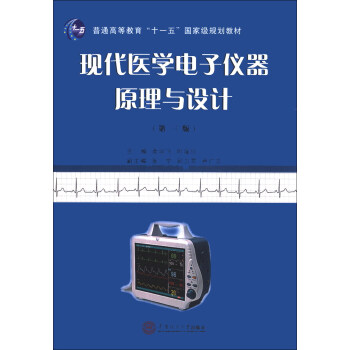
![竞赛数学教程(第3版)/高等学校教材 [A Course in Competitive Mathematics] pdf epub mobi 电子书 下载](https://pic.tinynews.org/11323220/5652a6b7Nc9741694.jpg)

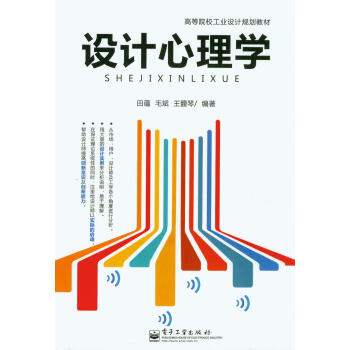

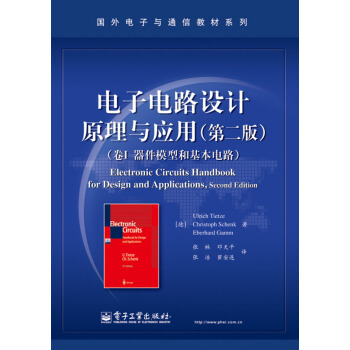



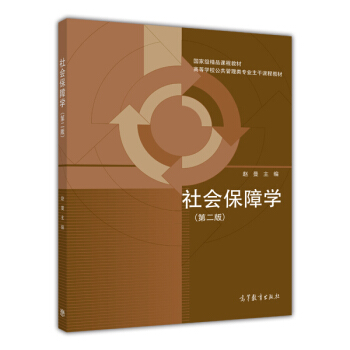
![先进机器人控制/中国科学院研究生院教材 [Advanced Robot Control] pdf epub mobi 电子书 下载](https://pic.tinynews.org/11437102/57464966Ndbdb46a4.jpg)

